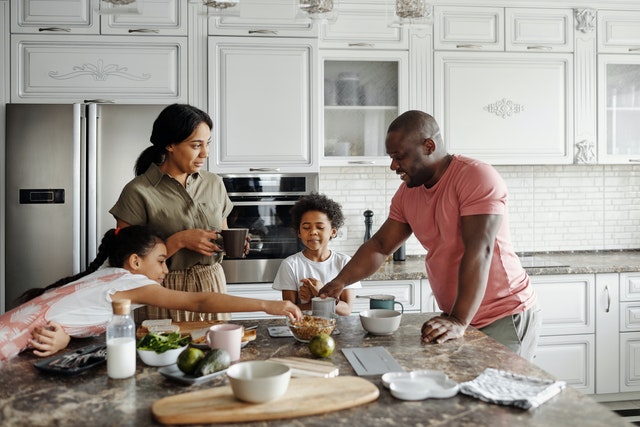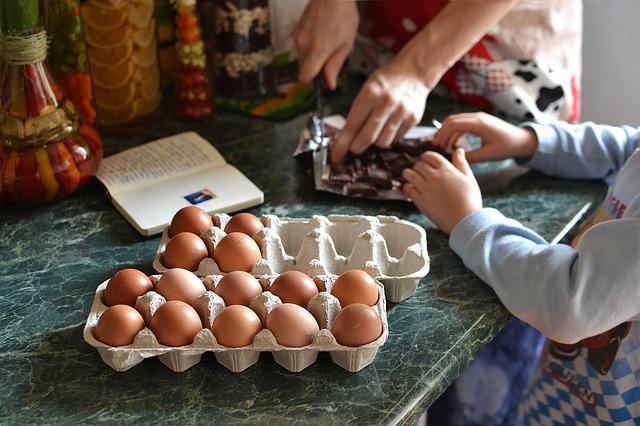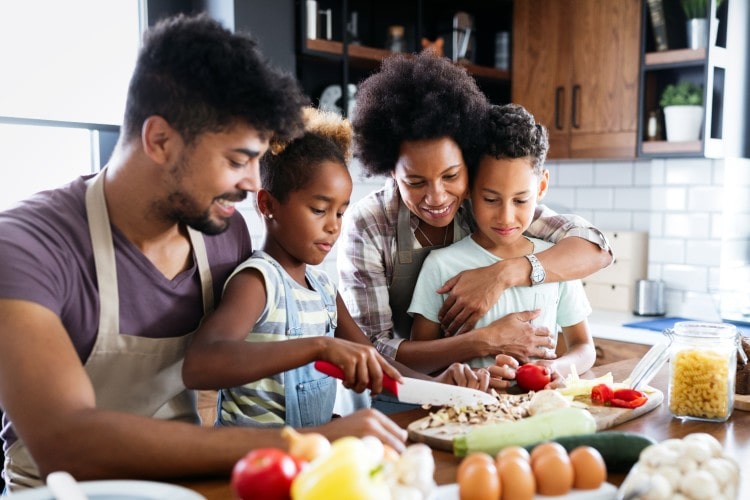For many of us, cooking is a chore, not a pleasure. It’s not something we want to do, it’s something we have to do. But when you have a family, cooking a meal can be a labor of love. Still, you don’t have to do it alone.
So many families have busy schedules, between careers, schools, and extracurriculars, but cooking can be a great way to spend time together as a family and take the full burden of cooking off the adults in the family at the same time. And it can be fun for kids too!
Why is Cooking Together Important for Families?

With so many families having busy, hectic schedules, one of the simplest reasons that cooking together is important is that it provides an opportunity for quality family time – without having to set aside even more of our limited hours.
Even more importantly, spending time together while doing an activity, such as cooking, often encourages kids to open up more than they would if you tried to sit down and talk face to face. This is especially true with older kids, who may be less willing to share the ups and downs in their lives with their parents.
Of course, there are also more practical benefits to getting the whole family involved with cooking.
For one, it helps everyone feel like they have a say in meals and promotes teamwork and compromise. It also helps teach organizing and planning by deciding menus for the week, determining which groceries are necessary, and figuring out how to time the cooking process to make sure different foods are ready at the same time and on time.
It’s also a great opportunity for kids to learn cooking skills, and to teach healthy eating habits and decision-making regarding food. Finally, it encourages teamwork, both by coordinating food preparation and by working together (and compromising) to decide what to eat.
Ways to Get Your Family Cooking Together

Getting Little Kids Involved
For the youngest kids, it’s more about getting them in the kitchen and creating positive associations with preparing meals than getting real help.
For babies, sticking them in their high chair or in a playpen (somewhere they won’t be underfoot or at risk of hot splashes or surfaces) with a fun activity is plenty.
Once they hit the toddler stage, you can start to get them involved. Just be sure to practice kitchen safety with your kids.
Measure things out yourself, then let them help you pour. Let them help you roll cookie dough balls or squish meatloaf mix. Just make sure their hands are clean first. Even just letting your child watch you cook can be interesting for them, and explaining what you’re doing while you cook can help language development, even if they don’t totally understand.
Getting Elementary Schoolers Involved
Elementary school is a great time to start teaching kids basic kitchen skills, like measuring, stirring, and checking temperatures. Things like eggs, brownies, and simple breads like pretzels are great places to start. You can get them to help you with steps of more complicated dishes, like stirring, boiling dried pasta, or browning ground meat. They can also use other kitchen appliances, like air fryer microwaves.
It’s also a great time to start teaching about food safety and the importance of things like cleaning preparation surfaces, avoiding cross-contamination, and cooking meat to a safe temperature.
In addition, you can start getting elementary schoolers involved in planning meals by giving two options for the meal and letting them choose what to cook. This helps get kids feel like they have a say without giving them too much freedom. This will help reluctant little chefs feel more inclined to get in the kitchen with you.
Getting Middle Schoolers Involved
Middle schoolers are old enough that you can start to give them more independence in the kitchen and teaching them more complicated recipes. Now they can start chopping vegetables, making soups and sauces, and assembling more intricate desserts.
In addition, most kids have grown out of the “chicken nuggets only” stage, so you can also start to get input on what they’d like to eat. Some nights, you can even let your kid play head chef. They can take the lead, and you can play a more supporting role while still providing supervision.
Getting Teenagers Involved
Once your kids are teenagers, cooking can be more of a social activity rather than a teaching opportunity.
You can start planning meals together as long as they’re not too picky. In fact, many teenagers enjoy trying out unusual ingredients or cuisine from different cultures. Hitting up farmer’s markets and international grocery stores can be a great way to scratch that itch.
When it comes to cooking, your teen should be able to do most normal kitchen tasks by themselves, so you can split cooking duties however you’d like. With less teaching required, you can spend more time talking.
Final Thoughts
A key thing to remember is that all the age ranges given here are approximate. You know your child best, so you can give them more or less responsibility as you see fit. The important thing is that you’re spending time together to bond, learn, and instill important values, like healthy eating and prioritizing family time.


